This may be the random lectures of the elderly, but a long long time ago when the dinosaurs roamed the Earth and I was born, traits in Weiss Schwarz were locked and not universal. For the new whippersnappers, universal traits are a common standard in Weiss Schwarz series. Almost every character in a set usually encompasses at least one common trait that is shared among most of the cards with one or two off-traits. Most players take this for granted as do I since the universality of traits makes it easier to conduct your game plan.
You do not need to worry about meeting many trait-based requirements since they’ll usually be automatically fulfilled by the cards in the set. But this wasn’t always the case. And when this existed, building decks was a lot more complicated. You could, in theory, put cards that conflicted in traits and would potentially disrupt each others’ effects, but whether the risk was worth the reward was dependent on you.
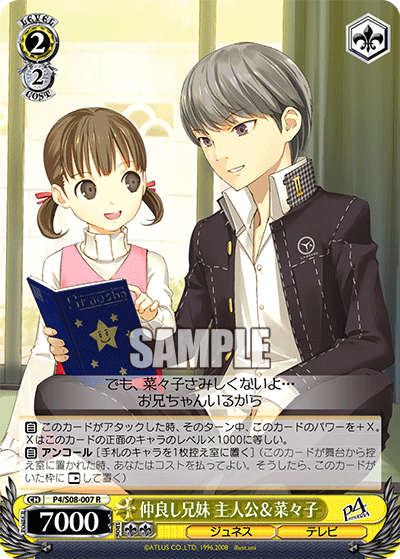

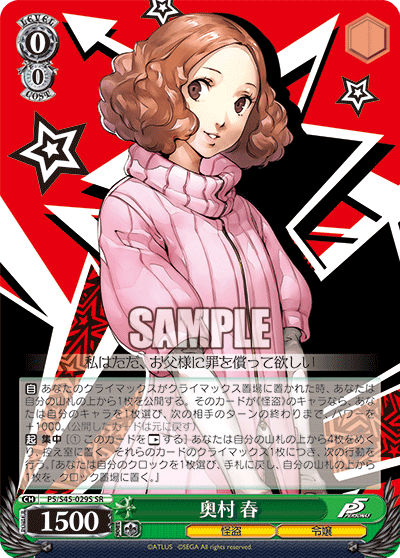
P3/SE46-16SP-SP 主人公&タナトス リロード (center)
P5/S45-029S-SR 奥村 春 (right)
Persona was a good example of this. Despite all the sets being neo-standard with each other, meaning you can mix all the characters in Persona together in a single deck, many cards do not share synergies outside of their individualized set. This makes sense in both practice and logic. Each Persona game is a separate entity from each other after all. However, there is a secondary reason for this as well. This is, of course, to balance these series.
Since traits are the main check for how many of the effects resolve in Weiss, by denying a universal trait, it dissuades players from combining cards from different sub-sets together. I wouldn’t believe this to be a malicious intent by Bushiroad. This is more of a safeguard to prevent any unwanted or unbalanced synergies from accidentally arising and causing more problems down the road.
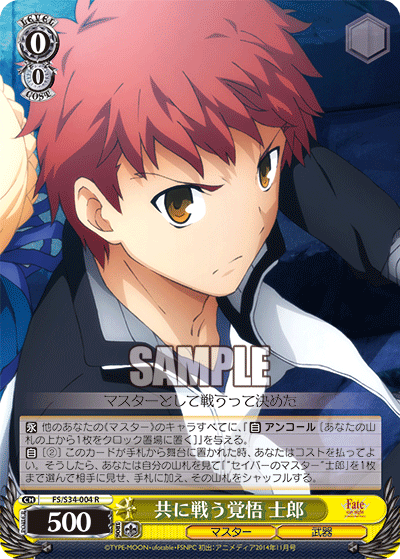
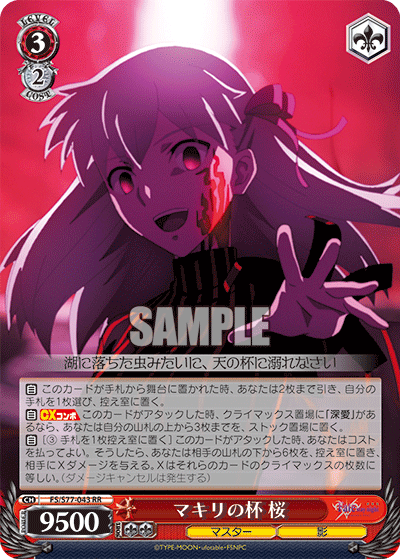
Take for instance the infamous situation with UBW Shirou and sets released thereafter. Shirou wasn’t intended to really give further support to new sets coming to Fate. But because of his innate ability to support Master (マスター) trait, he could readily support many of the newer cards in the most recent sets. In fact, Shirou was one of the big reasons why Fate was extremely powerful back in its peak with Heaven’s Feel 2.
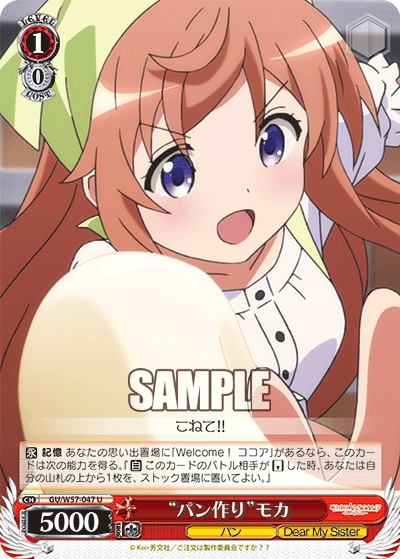
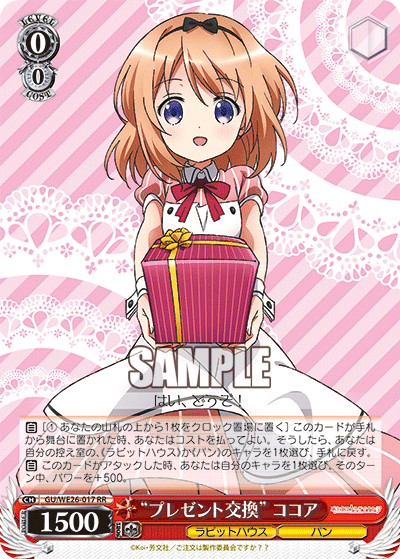
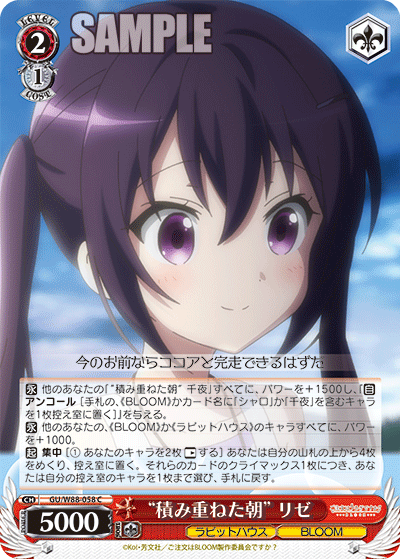
GU/WE26-017RR “プレゼント交換” ココア (center)
GU/W88-058C “積み重ねた朝” リゼ (right)
That being said, trait-sharing and support is by no means universal in Bushiroad’s mind either. Many sets such as Gochiusa can be heavily restricted due to the vast trait variances between individual sets. Whereas, some series like Sword Art Online readily receive support that can work universally with its old counterparts. But speaking of which, Bushiroad had integrated something that’s relatively old now, but it was a measure to try and balance out the game even more. The advent of “Anniversary” sets limits the power of a series as a whole since Anniversary sets are competing with the main trait of the series in its past. As such, Anniversary sets, while related to an individual series, are often considered to be an outlier that builds in its own set. While older synergies may be discarded, often these Anniversary sets are much more powerful individual card-wise and smoother in gameplay as well. This does come at a cost of losing out on traditional combos and smaller cool abilities from previous sets. You can still try and force them, but it will obviously not be as efficient.



ISC/SE53-16N 不機嫌なテーマパーク 芹沢あさひ (center)
ISC/SE53-37SP-SP 空・風・明・鳴 幽谷霧子 (right)
So why is it that I decided to make this post now? Idolm@ster Shiny Colours has revealed in its upcoming cards (tentative) that they are reintroducing trait lock. In my humble opinion, whereas removing trait lock and opening universal traits has allowed the game to progress further and opens up building flexibility for players, it has also lead to rather mundane and static build paths as well. One major complaint back in the day was for a series such as To Love-Ru, you were essentially locked into very specific decks with low flexibility. You can see the deck here. However, freeing traits eventually homogenizes decks into the “best” pile that can be optimally put together.
Granted, this isn’t solely an issue that is caused by universal traits. Profiles have also become generic, but the fact that most profiles check generic traits aids to creating this singular, standardized deck building style. I’m not here to say that my deck building is superior. Many of the decks on this site are aligned to many of the principles of modern day deck-building and uses many common profiles. The difference is the flexibility in cards compared to jamming the “best” cards available. By averting from the main path or conception of the “best”, my deck profiles here aim to share some other less looked at synergies or cool ideas to formulate deck building.
A transition back to trait locking would benefit new players while also allowing a greater diversity of decks to exist in the metagame or even at your local store. Given that many of these new cards that are trait locked and seemingly common generic profiles, players will have to make a choice to either build in that specific trait (units in this case) or deal with lowered consistency (which heavily hurts gameplay). If players were to take the choice of the former, there may be a possibility to see a wider range of Shiny Colours decks locally with fans orienting towards maybe a unit like Noctchill or L’Antica versus the most common meta build of eight standby good cards. This increased diversity leads to a healthier and more engaging environment where, at the very least, you’ll get a more refreshed look at a wider range of cards over the typical common pile.
Ultimately, I think this is a good thing. Why I stated before that this would benefit new players is because trait locks simply limits card choices. One of the most difficult things when it comes to new players is when you’re given an overwhelming pool of cards to pick from. Veteran players know exactly what to look for and observe clear synergies, but for new players, this is an overwhelming task. Trait lock eases this by limiting a card pool, making it easier for players to select cards. Perhaps, the most important reason to note is that trait locking lowers consistency unless you are building in that direction. This will reduce the overall power of generic decks as more explosive and unintended interactions are more likely limited due to the restrictions of each trait archetype.
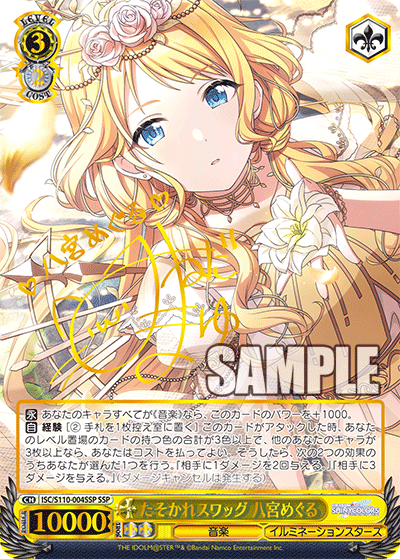
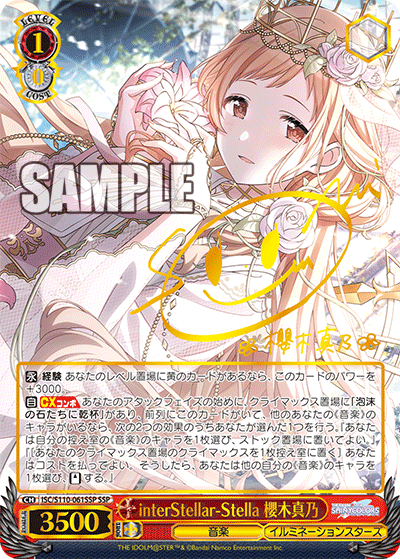

ISC/S110-061SSP-SSP interStellar-Stella 櫻木真乃 (center)
ISC/S110-116SSP-SSP ひとりじゃない夜のこと 風野灯織 (right)
Now I’m not saying that archetype decks are perfectly balanced either. Looking back at the example of Shiny Colours in the past, which I’d like to remind players peaked earlier this very year, there were clearly some design choices that had to be reconsidered. Now, Illumination Stars (イルミネーションスターズ) has a gimmick where they do need having three different colours in the level zone to facilitate their effects. 1/1 Hiori was essential to ensuring you met colour requirements. I personally own a full Illumination Stars deck, and I’d say that the core of it is very strong with 1/0 Mano and 3/2 Meguru. Meguru herself was actually a pay-off for fulfilling the Illumination Stars gimmick. The problem with this deck lay when individuals started to use Illumination Stars as an engine rather than respecting the unit as its own deck. Now, I personally think the deck is relatively okay in power if you were to play it in its own shell. But when the three girls above had universal trait requirements and could easily be slotted into any deck, it became problematic as other cards could create unfun and unfair game patterns. By locking Illumination Stars’ cards to its own unit, I think the cards would have been far more balanced as a whole.

I think Bushiroad has learned its lesson this time (maybe, you never really know with this company). The new upcoming Meguru finisher, in order to take advantage of her powerful finishing ability, requires you to specifically have a field of Illumination Stars characters. I think this is very fair and this should have been the direction that their game balancing team should have been pushing long ago. The only question that remains now is if this direction is something where we are headed or if this is just a simple one-off thing that Bushiroad is attempting (again).